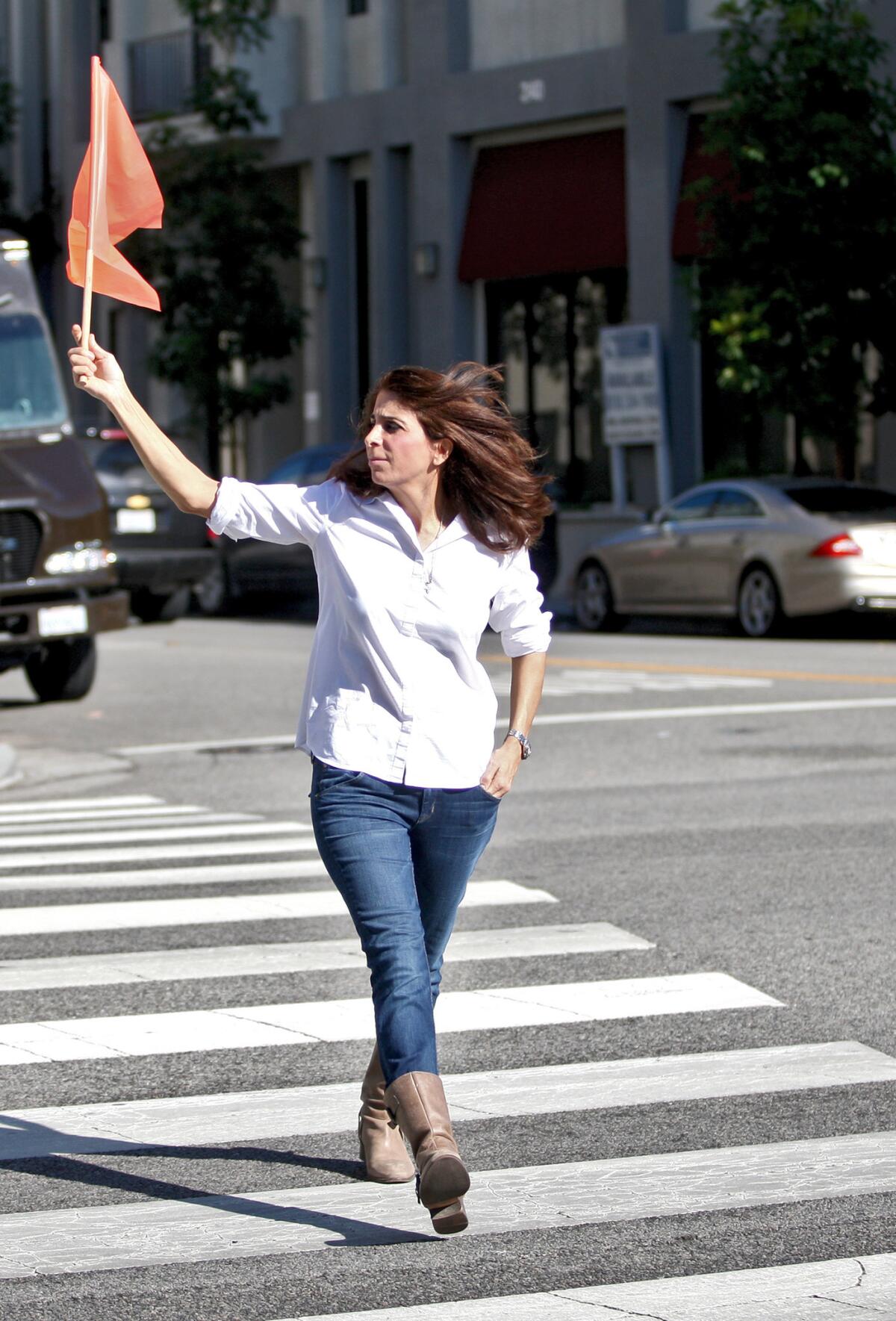News-Press Editorial: New safety measure raises a flag

- Share via
In response to an alarming number of vehicle versus pedestrian skirmishes the Pedestrian Safety Task Force was created by the Glendale City Council last year. The obvious hope is that the findings and suggestions of the task force will significantly improve the situation.
We want to encourage the city to do everything in its power to enhance traffic safety on our streets, so the creation of the task force was a good idea, in our view. But we are not impressed by the test program unveiled this week wherein pedestrians hoping to make it safely across unmarked crosswalks — at East Colorado and Jackson streets, as well as at Kimlin at East Chevy Chase drives — are urged to pick up an orange flag and wave it to keep drivers from mowing them down. Then they’re supposed to deposit said flag in a receptacle on the opposite side of the street. Theoretically, there will be enough people traveling both directions that flags will be available to walkers poised to advance into the street from both curbs.
Glendale is not the first city to try this measure. It was implemented 15 years ago in Salt Lake City and other cities around the U.S. have also given it a try, some with such limited success that they abandoned it in short order. Not surprisingly, the flags have a tendency to either break or disappear altogether, so there are issues maintaining such a program. Also, there’s a matter of public buy-in to the program. Some pedestrians have said they feel silly carrying a flag across the street while many ignore them entirely and make the mad dash as they’ve always done, no flag in hand.
As we are only a few days into the test program here, it’s obviously too soon to assess its effectiveness. But we doubt enough people will use the flags to make an ongoing and measurable difference.
According to the World Health Organization, the risk factors for pedestrian versus car accidents include vehicle speed, poor road design and inadequate enforcement of traffic laws. Pedestrians too have to take responsibility for their safety. They must pay close attention to the drivers around them and not assume approaching vehicles will stop just because there’s a person trying to cross the road on foot in front of them. Distractions such as using cellphones, whether while walking or driving, contribute to the problem.
Rather than hoping a flag waved by pedestrians will improve our traffic safety record, we believe it would be better if our city leaders put resources into an integrated approach that not only educates drivers and pedestrians, but also takes a hard look at whether or not our roads are pedestrian-friendly enough and if the laws governing them are being adequately enforced.